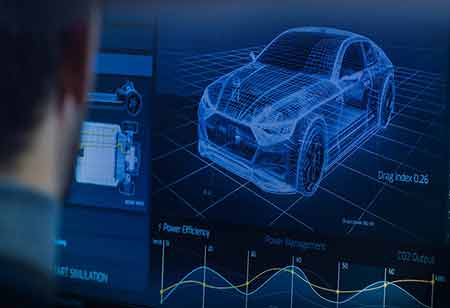THANK YOU FOR SUBSCRIBING
THANK YOU FOR SUBSCRIBING
Be first to read the latest tech news, Industry Leader's Insights, and CIO interviews of medium and large enterprises exclusively from Auto Tech Outlook

By
Auto Tech Outlook | Thursday, June 02, 2022
Stay ahead of the industry with exclusive feature stories on the top companies, expert insights and the latest news delivered straight to your inbox. Subscribe today.
3D printing has vast pertinence in the vehicle sector, from designing and manufacturing an appealing colored dashboard to evolving efficient fuel systems and complex braking mechanisms.
While 3D printing is still a part of youth in the automotive sector, it is projected to gain significant attention. 3D printing, or additive manufacturing, has extended from a niche technology used to create simple prototypes over the past decade.
3D printing is powerful in the automotive industry because it enables rapid prototyping, decreases turnaround time, and boosts flexibility. Other ways 3D printing establishes a foothold in automotive include waste reduction and cost reduction.
Automotive prototyping: Automobile manufacturers locate a premium on meeting high-performance standards in security, fuel efficiency, connectivity, and aerodynamics. And the most efficient way to accomplish this goal is through the use of prototyping. Moreover, the automobile industry profits from prototyping by decreasing production time, lowering manufacturing costs, and developing novel, lighter, and cleaner car designs.
Automakers must harness 3D printing technology to allow quick prototyping throughout the pre-manufacturing process to gain these benefits. Especially additive printing is one of the most efficient methods for validating prototypes, from fast lower features to pretty detailed full-scale pieces. In addition, the full-scale components are regularly suited for performance and verification testing.
Customized automobile components: Automobile manufacturers invest significantly in 3D printing technology to create vehicle-specific seats, steering wheels, and body elements. Designing automotive features distinctive to individual consumers' demands is critical for boosting consumer happiness.
Moreover, automakers can employ additive manufacturing to produce spare and replacement parts for luxury and historic automobiles. As per the car advice website 4x4Reports.com, selecting replacement hoods for your vehicle can be overwhelming, owing to the variety of options available.
Nevertheless, users can buy replacement hoods that match their preferences. 3D printing secures effectiveness, enabling automakers to personalize automotive parts more quickly and affordably.
Premanufacturing sampling and tooling: Masters in 3D printing for premanufacturing samples consider this application the most promising in the automobile sector. Automobile manufacturers can employ 3D printing to create thermoforming tools and molds and increase the production of jigs, grips, and fixtures. Also, additive manufacturing reduces sampling and tooling costs, avoiding future automobile manufacturing losses.
Additive manufacturing, or 3D printing, is obtaining traction in the automotive sector, and for a good reason. Carmakers may employ this technology to develop vehicle designs that improve connectivity, fuel efficiency, and security performance. Also, 3D printing enables the personalization of vehicle parts and minimizes the cost of sampling and tooling.
 Copyright © 2025 AutoTech Outlook. All Rights Reserved | Privacy Policy | Subscribe | Sitemap | About us | Feedback Policy | Editorial Policy
Copyright © 2025 AutoTech Outlook. All Rights Reserved | Privacy Policy | Subscribe | Sitemap | About us | Feedback Policy | Editorial Policy 



